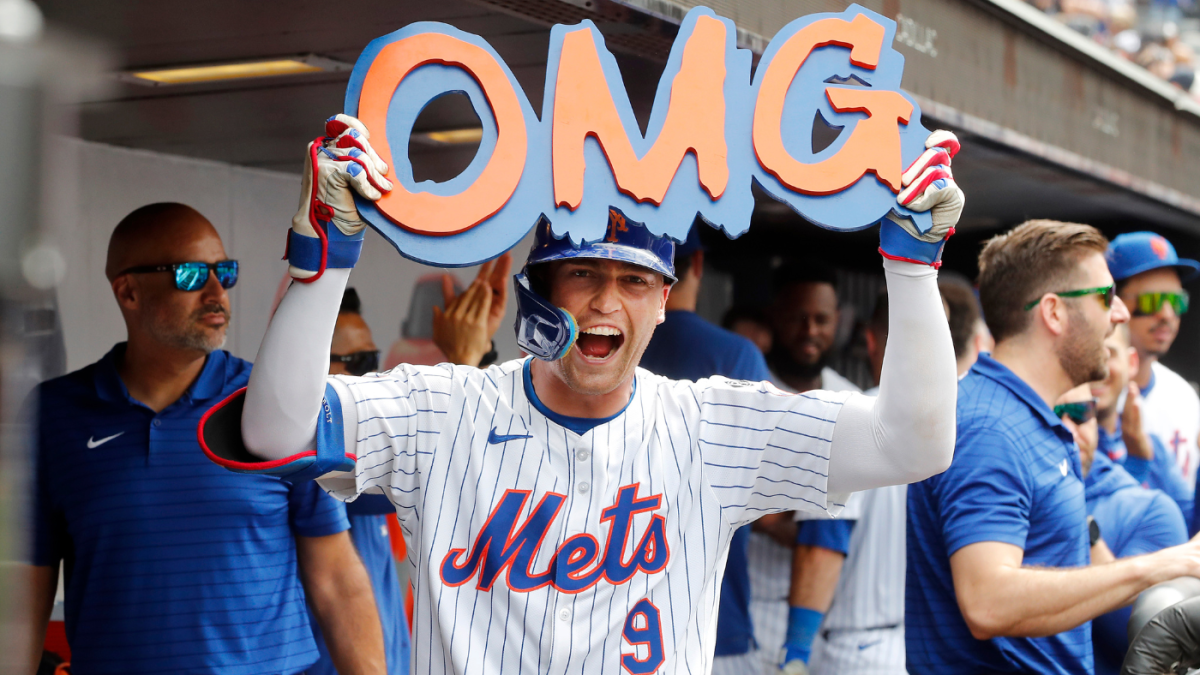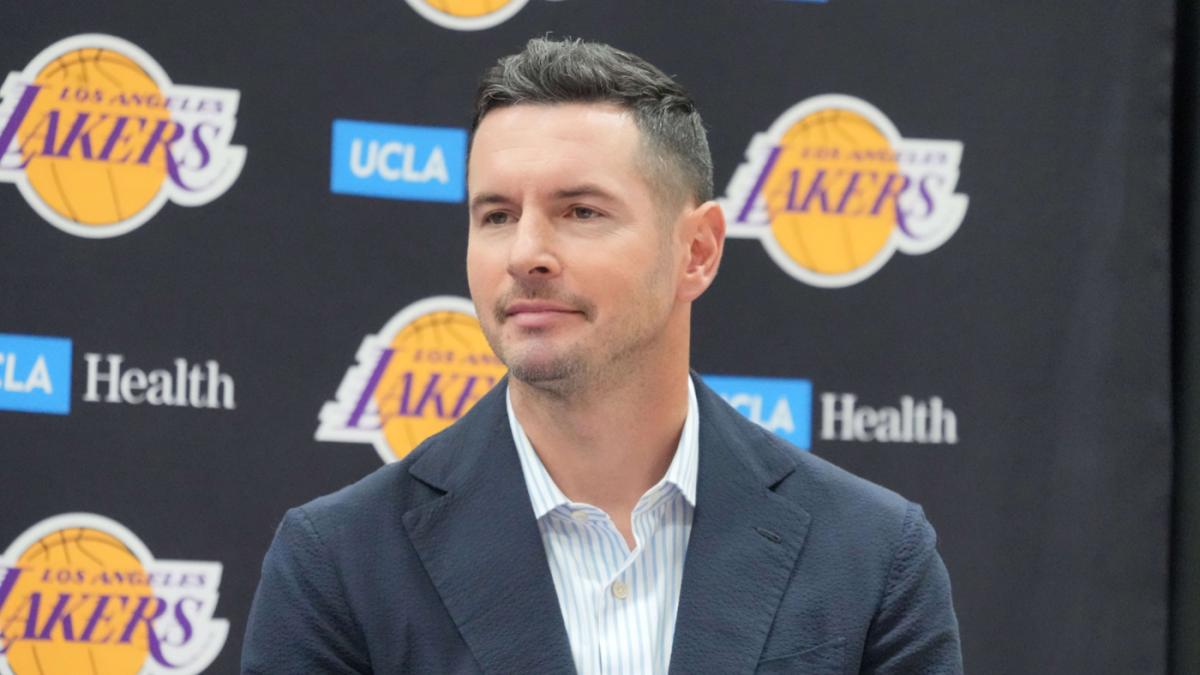Sports
How Mets’ NL-best June record put them back in playoff race: Three ways wild-card contenders turned it around

Buoyed by a June surge in the standings, the New York Mets now number among the serious National League playoff contenders as July begins.
While June ended with their dropping two straight to the Astros, the Mets overall enjoyed a script-flipping month that may have altered the course of their season. Following a 5-4 loss to the Diamondbacks on June 2, the Mets slipped to a season-worst 11 games under .500. That low point put them on pace for 96 losses and gave them just a 7.9% chance of making the postseason. Coming off a disappointing 87-loss campaign in 2023, these new depths raised some troubling questions for the organization. Was this current core in need of breaking up? Would franchise stalwart and pending free agent Pete Alonso be moved at the deadline? Would a sell-off undertaken by lead decision-maker David Stearns run even deeper than that?
Swiftly, though, things changed. Coming off a dismal 9-19 May, the Mets turned an 0-2 June start into an overall record of 16-8 for the month, which is good for the NL’s best mark for the month. In related news, the Mets’ current SportsLine playoff odds are all the way up to 56.5%.
So how did the Mets pull off their June reversal of fortunes? Let’s have a quick look.
1. Francisco Lindor and other veteran hitters stepped up
The Mets in June led the NL in runs scored with 153. Overall, only the mighty Orioles touched home plate more often in June, but they needed five more games than the Mets played to reach their tally of 163 runs. In related matters, the Mets for the month as a team had a slash line of .283/.358/.507. In terms of 2024 levels of production, that’s like having a lineup full of hitters somewhere in between Vladimir Guerrero Jr. and Carlos Correa.
Related:
Noteworthy within that team-wide trend is star shortstop Francisco Lindor Jr., who’s methodically found his level this season. Here are his monthly splits for the season thus far:
- March/April: .197/.280/.359
- May: .263/.315/.447
- June: .290/.351/.520
Lindor in June also swiped seven bags without being caught and hit into only one double play. He also had 11 doubles for the month. To put that in full context, the average MLB shortstop in June had a slash line of .254/.317/.407, and those numbers are of course being lifted up by Lindor’s own outputs for the month. Lindor wasn’t the most productive Met for the month at an absolute level, but once you put his numbers in the context of his positional peers he just might’ve been.
2. A couple of young bats made their presence known
The Mets’ offensive uprising wasn’t just fueled by veterans like Lindor, Brandon Nimmo, Harrison Bader, J.D. Martinez, Jose Iglesias, and others. The Mets’ young core of position players also made strong contributions. Most notably, catcher Francisco Alvarez finally returned from a thumb injury that cost him almost two months. The 22-year-old Alvarez returned to the active roster on June 11, and since then he’s batted .375/.456/.667 with almost as many extra-base hits (8) as strikeouts (9). Suffice it to say, that’s a special slice of production from the premium position of catcher. It’s doubly important for the Mets, as Mets catchers not named Francisco Alvarez this season have combined to “hit” just .211/.253/.345. Alvarez is back to looking like a future All-Star.
Elsewhere, there’s 24-year-old Mark Vientos. The former second-rounder pinned down third base for the Mets in June after Brett Baty was demoted, and along the way he authored a batting line of .277/.344/.566 with a team-leading seven homers for the month. It’s probably no accident that Vientos’ ramped-up production has coincided with his receiving more consistent playing time. As we did with Alvarez and the catcher position …
- Vientos as the Mets’ third baseman in 2024: .303/.363/.607, 10 home runs in 135 plate appearances.
- Mets third basemen not named Mark Vientos in 2024: .225/.229/.302, three home runs in 188 plate appearances.
Suffice it to say, that’s a vastly improved state of affairs at the hot corner.
3. The power differential has been in their favor
The Mets’ offensive excellence for the month has been duly explored. On the other side of things, the Mets’ pitching for June may be described as “good enough.” That doesn’t amount to excellence – the Mets’ staff ranks 17th in MLB for the month in ERA and 15th in FIP – but it’s been, well, good enough. Met moundsmen, however, have thrived when it comes to suppressing power in June, especially in light of how the offense has performed. Consider:
- Mets pitchers allowed 25 home runs in June, which is tied for fifth-fewest in MLB over that span.
- Mets pitchers permitted 315 total bases in June. Among all 30 teams, just the staffs (staves?) of the Phillies and Braves allowed fewer for the month.
- In terms of isolated power, or ISO, which is slugging percentage minus batting average (a rate-based measure of power), Mets pitchers in June allowed a figure of .145. That’s the fifth-lowest in baseball.
Compare those allowances to what Mets hitters did in the month just completed and you find some highly beneficial “power margins” for the Queenslanders. To wit:
- The Mets in June hit 16 more home runs than they allowed.
- The Mets in June racked up 108 more total bases than they allowed.
- The Mets’ ISO for June was 79 points higher than their ISO allowed.
The contemporary game is a power game and producing more power than you permit is the single most important ingredient of on-field success. The Mets in June did that better than anyone, and that’s why they find themselves very much alive in the postseason chase right about now.










